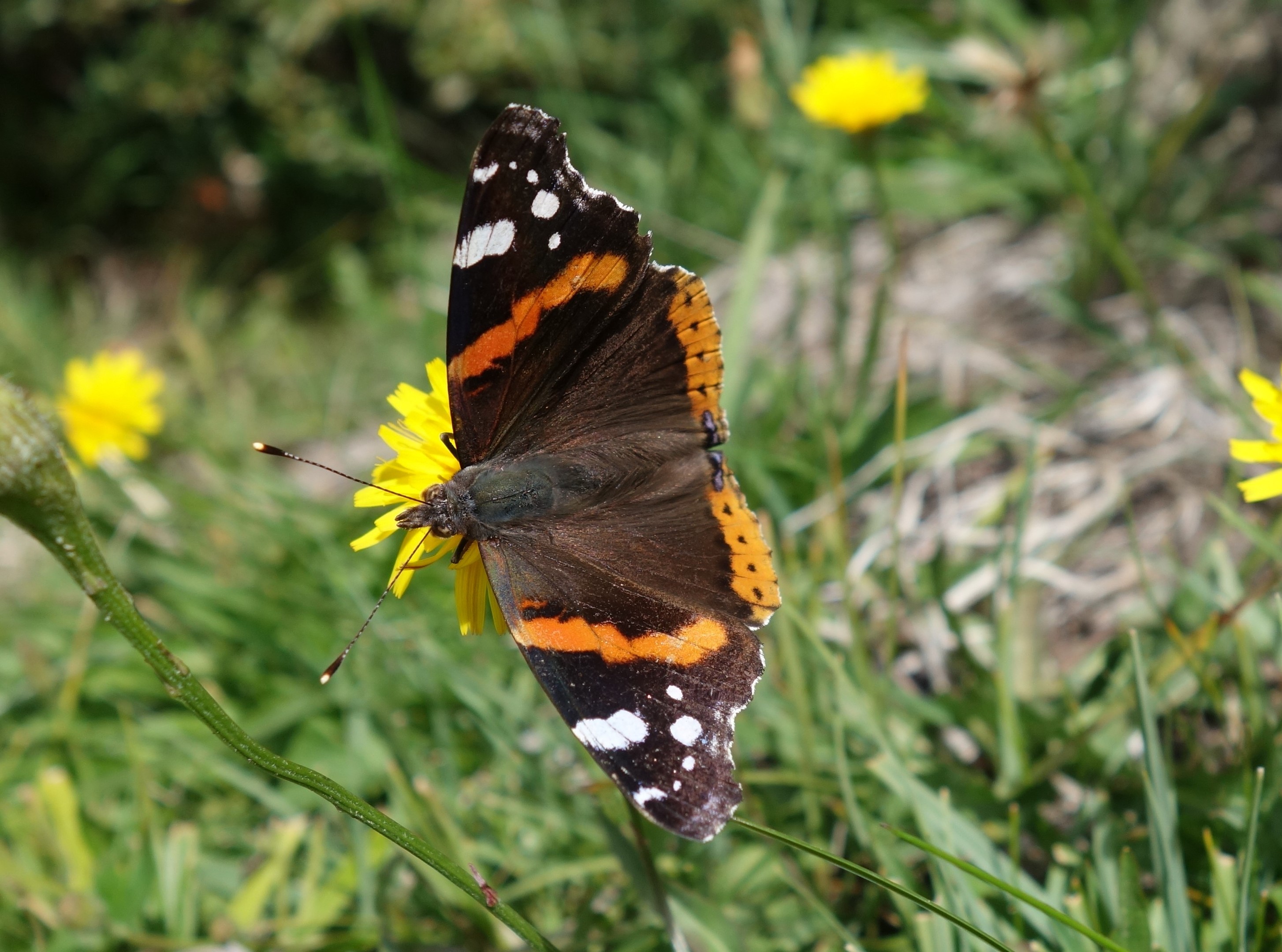September air, so clear and fair; a time of swansongs for some creatures whilst others – such as several types of geese – will be hitting our shores over the next few weeks as they leave their northern breeding grounds to seek respite from the rapidly approaching arctic winter.
But for me, September is all about softly-lit backgrounds against a gently waning sun. There is a special sharpness to the air that invigorates the heart. It is also a peak time to see all kinds of wildlife and among the most striking are red admiral and peacock butterflies.
Both species are total sugar junkies at this time of year, actively seeking out nectar from late flowering plants or settling upon rotting windfall apples to sup their sweetness. If you have a buddleia growing in your garden, the chances are its purple flower spikes will now be a magnet for both of these types of butterfly.
Red admirals can be a bit flighty when you try to approach close, so I was pleased to come across a more relaxed individual recently (photographed here). An interesting thought; if some red admirals are less skittish than others, does that mean that each individual butterfly has its own unique “personality”? I rather imagine it does.
Most red admirals are unable to survive a Scottish winter, so the ones we first see here in spring are migrants that arrive from continental Europe and North Africa. These incomers lay eggs and the butterflies now on the wing come from this recently emerged new generation.
I just love watching beautiful peacock butterflies as they swirl and dance in the air. They are so named because the iridescent “eyes” on the wings look similar to the markings found on a peacock’s tail. The large-eye pattern is designed to startle potential predators, especially if the butterfly quickly flashes the wings open.
But I suspect a mouse or bird would quickly learn from such a ruse and soon ignore it. As another aside, it is relatively unusual to see any type of butterfly being taken by a bird or small mammal. I’m not sure why this should be so, especially since butterflies are most conspicuous, and one would have thought easy to catch. Perhaps their large wings are hard to deal with.
Serene September is but a passing month, over so quick and soon no more than a memory. The air chills, the last remaining flowers wilt and the days become shorter.
It is the turning of the seasons and the turning of life. By November, the peacock butterflies will seek out garden sheds or hollow trees to find a sheltered place to hibernate. Many won’t make it, but some do, and they will reappear the following spring to lay their eggs. The job is done and they too will die. The next generation of peacocks is now waiting in the wings.
Info
As well as buddleias in the garden, red admirals and peacocks particularly favour sedums (ice-plants) for their rich nectar. Both these butterfly species lay their eggs on nettles in the spring and summer.










